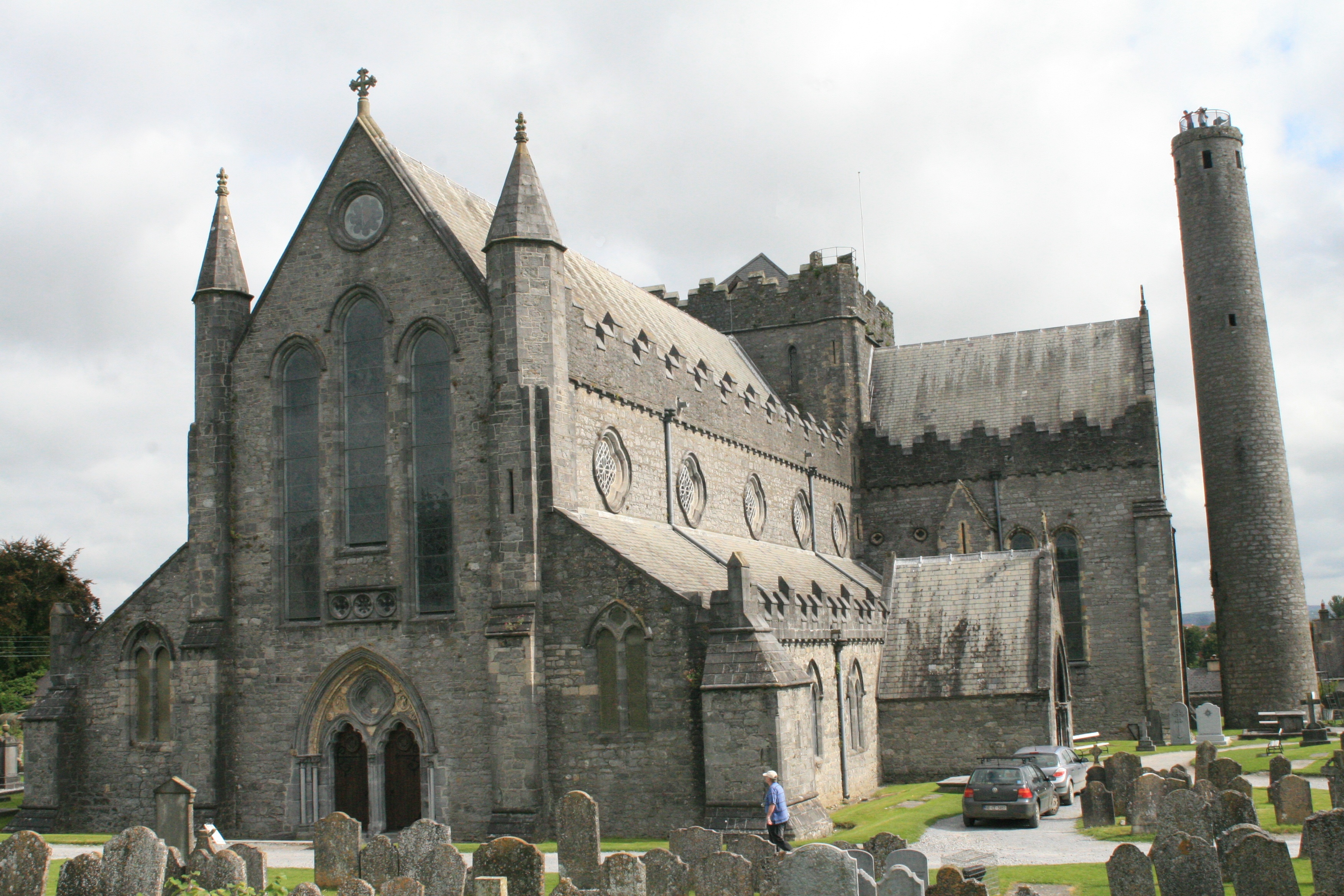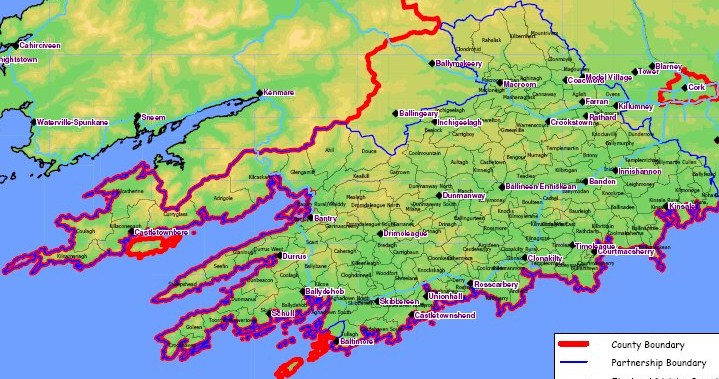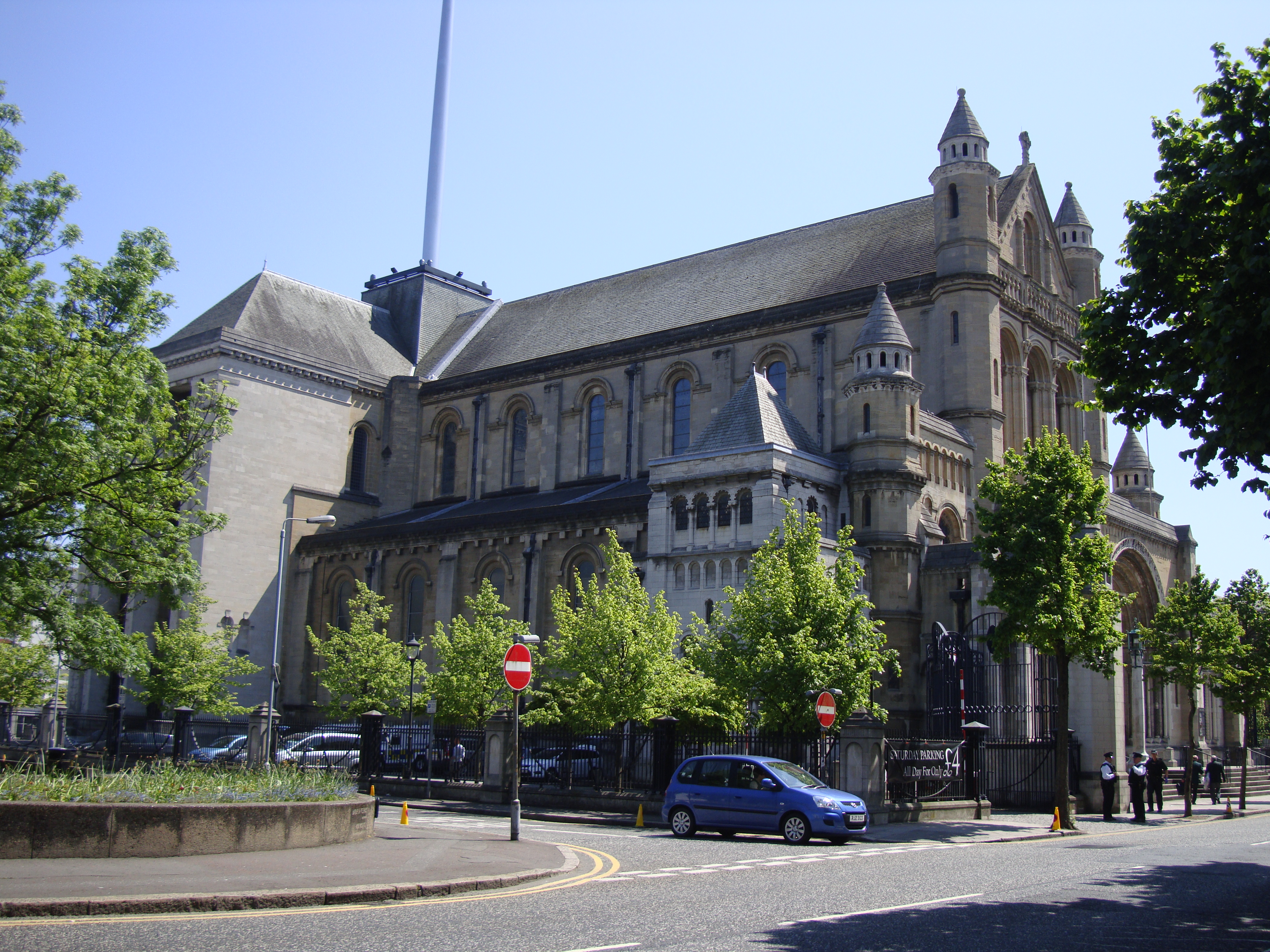|
Brian Harvey (priest)
Brian Harvey (1916-2005) was Dean of Ossory from 1970 to 1991. He was educated at Trinity College, Dublin and ordained in 1941. After curacies in Dublin he was on the staff of Queen's University Belfast from 1945 to 1948. He spent the next fifteen years in India, rising to become Archdeacon of Hazaribagh. He was Canon Theologian at Belfast Cathedral from 1963 to 1970. He retired to West Cork West Cork ( ga, Iarthar Chorcaí) is a tourist region and municipal district in County Cork, Ireland. As a municipal district, West Cork falls within the administrative area of Cork County Council, and includes the towns of Bantry, Castletownber .... Notes Alumni of the University of St Andrews Deans of Ossory 1916 births 2005 deaths Archdeacons of Hazaribagh {{Ireland-Anglican-clergy-stub ... [...More Info...] [...Related Items...] OR: [Wikipedia] [Google] [Baidu] |
Dean Of Ossory
The Dean of Ossory or Dean of Kilkenny is based at The Cathedral Church of St Canice, Kilkenny in the united Diocese of Cashel and Ossory within the Church of Ireland. The current Dean is the Very Reverend Stephen Farrell, formerly Rector of Zion parish, Rathgar, Dublin and Provincial and Diocesan Registrar for the Diocese of Dublin and Glendalough. List of deans of Ossory *1547–1552 James Bicton *1552–1555 Thomas Lancaster (also Bishop of Kildare, deprived 1555) *1559–1581 William Johnson *1582 David Cleere *1603–1610 Richard Deane (afterwards Bishop of Ossory *1610–1612 John Todd (also Bishop of Down and Connor 1607–1612) *1612 Barnabas Boulger *1617 Absolom Gethin *1621 Jenkin Mayes *1626–1661 Edward Warren *1661–1661 Charles Curren *1661–1666 Thomas Ledisham (afterwards Dean of Waterford) *1666–1667/8 Daniel Neyland *1667/8 Joseph Teate *1670/1-1673 Thomas Hill *1673/4-1674/5 Benjamin Parry (afterwards Dean of St Patrick's and Bishop of Ossory 16 ... [...More Info...] [...Related Items...] OR: [Wikipedia] [Google] [Baidu] |
Hazaribagh
Hazaribagh is a city and a municipal corporation in Hazaribagh district in the Indian state of Jharkhand. It is the divisional headquarters of North Chotanagpur division. It is considered as a health resort and is also popular for Hazaribagh Wildlife Sanctuary ( from city). It is represented in the Indian Lok Sabha by its Member of Parliament Jayant Sinha. Etymology The name of the town 'Hazaribagh' (हज़ारीबाग़) is derived from two Persian words: ''Hazar'' (هزار) meaning 'one thousand' and '' bagh'' (باغ) meaning 'garden'. Hence the meaning of Hazaribagh is 'city of a thousand gardens'. According to Sir John Houlton, however, the town takes its name from the small villages of Okni and Hazari – shown on old maps as Ocunhazry. The last syllable in its name probably originated from a mango grove which formed a camping ground for troops and travelers marching along a military road from Kolkata to Varanasi, constructed in 1783 and the following ... [...More Info...] [...Related Items...] OR: [Wikipedia] [Google] [Baidu] |
1916 Births
Events Below, the events of the First World War have the "WWI" prefix. January * January 1 – The British Royal Army Medical Corps carries out the first successful blood transfusion, using blood that had been stored and cooled. * January 9 – WWI: Gallipoli Campaign: The last British troops are evacuated from Gallipoli, as the Ottoman Empire prevails over a joint British and French operation to capture Constantinople. * January 10 – WWI: Erzurum Offensive: Russia defeats the Ottoman Empire. * January 12 – The Gilbert and Ellice Islands Colony, part of the British Empire, is established in present-day Tuvalu and Kiribati. * January 13 – WWI: Battle of Wadi: Ottoman Empire forces defeat the British, during the Mesopotamian campaign in modern-day Iraq. * January 29 – WWI: Paris is bombed by German zeppelins. * January 31 – WWI: An attack is planned on Verdun, France. February * February 9 – 6.00 p.m. – Tristan Tzara ... [...More Info...] [...Related Items...] OR: [Wikipedia] [Google] [Baidu] |
Deans Of Ossory
Deans may refer to: People * Austen Deans (1915–2011), New Zealand painter and war artist * Colin Deans (born 1955), Scottish rugby union player * Craig Deans (born 1974), Australian football (soccer) player * Diane Deans (born 1958), Canadian politician * Dixie Deans (born 1946), Scottish football player (Celtic) * Ian Deans (1937–2016), Canadian politician * Kathryn Deans, Australian author * Mickey Deans (1934–2003), fifth and last husband of Judy Garland * Ray Deans (born 1966), Scottish football player * Robbie Deans (born 1959), New Zealand rugby coach and former player * Steven Deans (born 1982), ice hockey player * Tommy Deans (1922–2000), Scottish football (soccer) player * More than one Dean Places * Deans, New Jersey * Deans, West Lothian Deans is a small community within the town of Livingston, West Lothian, Livingston in West Lothian, Scotland. Deans is situated in the northern part of Livingston, The western area of Deans was formerly known as Li ... [...More Info...] [...Related Items...] OR: [Wikipedia] [Google] [Baidu] |
Alumni Of The University Of St Andrews
Alumni (singular: alumnus (masculine) or alumna (feminine)) are former students of a school, college, or university who have either attended or graduated in some fashion from the institution. The feminine plural alumnae is sometimes used for groups of women. The word is Latin and means "one who is being (or has been) nourished". The term is not synonymous with "graduate"; one can be an alumnus without graduating ( Burt Reynolds, alumnus but not graduate of Florida State, is an example). The term is sometimes used to refer to a former employee or member of an organization, contributor, or inmate. Etymology The Latin noun ''alumnus'' means "foster son" or "pupil". It is derived from PIE ''*h₂el-'' (grow, nourish), and it is a variant of the Latin verb ''alere'' "to nourish".Merriam-Webster: alumnus .. Separate, but from th ... [...More Info...] [...Related Items...] OR: [Wikipedia] [Google] [Baidu] |
West Cork
West Cork ( ga, Iarthar Chorcaí) is a tourist region and municipal district in County Cork, Ireland. As a municipal district, West Cork falls within the administrative area of Cork County Council, and includes the towns of Bantry, Castletownbere, Clonakilty, Dunmanway, Schull and Skibbereen, and the villages of Baltimore, Ballydehob, Courtmacsherry, Drimoleague, Durrus, Glengarriff, Leap, Rosscarbery, Timoleague and Union Hall. The westernmost part of the region consists of three main peninsulas: Beara, Sheep's Head and Mizen Head. Islands which lie off West Cork include Bere Island, Sherkin Island and Cape Clear. History and administration The area's pre-history is evident in the many Iron Age burial monuments, including a large number of megalithic tombs, dolmens, standing stones and stone circles. West Cork has had a distinct identity from at least the ancient Dáirine kingdom of Corcu Loígde which once covered much of the area. The historic baronies of Carbery ... [...More Info...] [...Related Items...] OR: [Wikipedia] [Google] [Baidu] |
St Anne's Cathedral, Belfast
St Anne's Cathedral, also known as Belfast Cathedral, is a Church of Ireland cathedral in Donegall Street, Belfast, Northern Ireland. It is unusual in serving two separate dioceses ( Connor and Down and Dromore). It is the focal point of Belfast's Cathedral Quarter. History The first architect was Sir Thomas Drew, the foundation stone being laid on 6 September 1899 by the Countess of Shaftesbury. The old parish church of St Anne by Francis Hiorne of 1776 had continued in use, up until 31 December 1903, while the new cathedral was constructed around it; the old church was then demolished. The Good Samaritan window, to be seen in the sanctuary, is the only feature of the old church to be retained in the cathedral. Initially, only the nave of the cathedral was built, and this was consecrated on 2 June 1904. In 1924 it was decided to build the west front of the cathedral as a memorial to the Ulstermen and women who had served and died in the Great War. The foundat ... [...More Info...] [...Related Items...] OR: [Wikipedia] [Google] [Baidu] |
Canon (priest)
A canon (from the Latin , itself derived from the Greek , , "relating to a rule", "regular") is a member of certain bodies in subject to an ecclesiastical rule. Originally, a canon was a cleric living with others in a clergy house or, later, in one of the houses within the precinct of or close to a cathedral or other major church and conducting his life according to the customary discipline or rules of the church. This way of life grew common (and is first documented) in the 8th century AD. In the 11th century, some churches required clergy thus living together to adopt the rule first proposed by Saint Augustine that they renounce private wealth. Those who embraced this change were known as Augustinians or Canons Regular, whilst those who did not were known as secular canons. Secular canons Latin Church In the Latin Church, the members of the chapter of a cathedral (cathedral chapter) or of a collegiate church (so-called after their chapter) are canons. Depending on ... [...More Info...] [...Related Items...] OR: [Wikipedia] [Google] [Baidu] |
Archdeacon
An archdeacon is a senior clergy position in the Church of the East, Chaldean Catholic Church, Syriac Orthodox Church, Anglican Communion, St Thomas Christians, Eastern Orthodox churches and some other Christian denominations, above that of most clergy and below a bishop. In the High Middle Ages it was the most senior diocesan position below a bishop in the Catholic Church. An archdeacon is often responsible for administration within an archdeaconry, which is the principal subdivision of the diocese. The ''Oxford Dictionary of the Christian Church'' has defined an archdeacon as "A cleric having a defined administrative authority delegated to him by the bishop in the whole or part of the diocese.". The office has often been described metaphorically as that of ''oculus episcopi'', the "bishop's eye". Roman Catholic Church In the Latin Catholic Church, the post of archdeacon, originally an ordained deacon (rather than a priest), was once one of great importance as a senior offi ... [...More Info...] [...Related Items...] OR: [Wikipedia] [Google] [Baidu] |
Queen's University Belfast
, mottoeng = For so much, what shall we give back? , top_free_label = , top_free = , top_free_label1 = , top_free1 = , top_free_label2 = , top_free2 = , established = , closed = , type = Public research university , parent = , affiliation = , religious_affiliation = , academic_affiliation = , endowment = £70.0 million , budget = £395.8 million , rector = , officer_in_charge = , chairman = , chairperson = , chancellor = Hillary Clinton , president = , vice-president = , superintendent = , vice_chancellor = Ian Greer , provost = , principal = , dean = , director = , head_label = , head = , academic_staff = 2,414 , administrative_staff = 1,489 , students = () , undergrad = () , postgrad = () , doctoral = , other = 2,250 (Colleges) , address = , city = Belfast , state = , province = , postalcode = , country = Northern Ireland , campus = Urban , language = , free_label = Newspaper , free = '' The ... [...More Info...] [...Related Items...] OR: [Wikipedia] [Google] [Baidu] |
Dublin
Dublin (; , or ) is the capital and largest city of Ireland. On a bay at the mouth of the River Liffey, it is in the province of Leinster, bordered on the south by the Dublin Mountains, a part of the Wicklow Mountains range. At the 2016 census it had a population of 1,173,179, while the preliminary results of the 2022 census recorded that County Dublin as a whole had a population of 1,450,701, and that the population of the Greater Dublin Area was over 2 million, or roughly 40% of the Republic of Ireland's total population. A settlement was established in the area by the Gaels during or before the 7th century, followed by the Vikings. As the Kingdom of Dublin grew, it became Ireland's principal settlement by the 12th century Anglo-Norman invasion of Ireland. The city expanded rapidly from the 17th century and was briefly the second largest in the British Empire and sixth largest in Western Europe after the Acts of Union in 1800. Following independence in 1922, ... [...More Info...] [...Related Items...] OR: [Wikipedia] [Google] [Baidu] |









